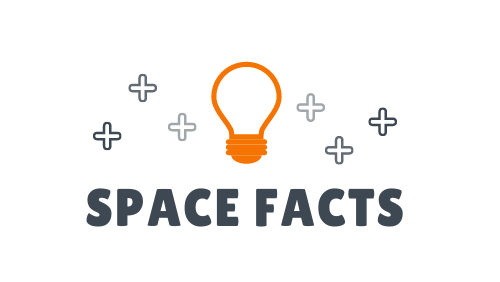Uranus Facts
URANUS FACTS
The home of interesting Uranus facts for kids and adults.

The Planet Uranus Factfile
| Uranus | |
|---|---|
| Position from the Sun | 7 |
| Diameter | 49,946 km |
| What is the mass? | 15 Earth |
| How many moons? | 27 |
| How far long is the orbit distance? | 2,870,658,186 km |
| How long does it take to orbit the sun? | 30,687 days |
| Whats the temperature on Uranus? | -197 °C |
| When was Uranus discovered? | March 13th 1781 |
| Who first discovered Uranus? | William Herschel |
10 Facts about Uranus you didn't know.
1. Uranus is the first planet to be discovered with a telescope
William Herschel originally thought that Uranus was a comet, but it was later discovered to be a planet with the aid of a telescope – making it the first planet to be discovered in modern history.
Did you know?
British astronomer William Herschel discovered Uranus in 1781 and originally wanted to name it "Georgian Sidus" after King George III. The name Uranus was settled on though after the wider scientific world decided they did not like William's suggestion and was instead named after the ancient Greek god, Ouranos
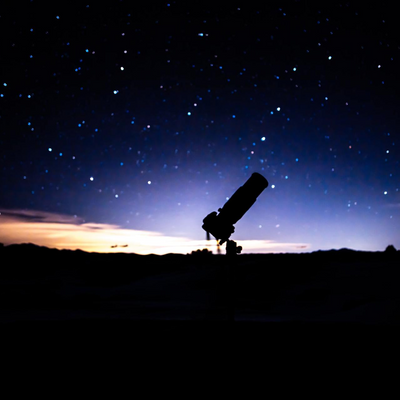
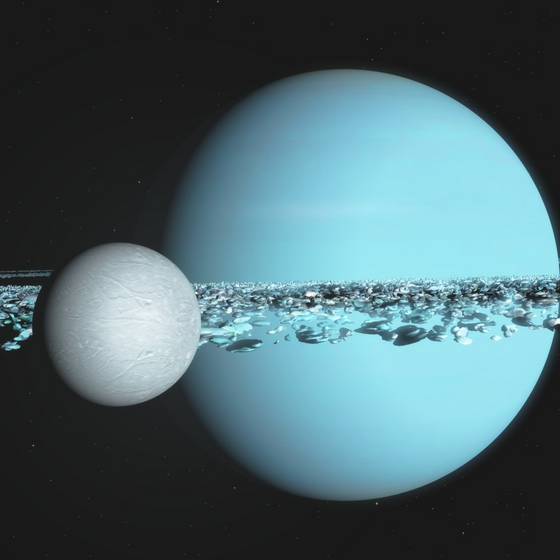
2. Uranus has 27 moons
Uranus places third in the race with the planet with the most moons behind Saturn 82 and Jupiter 79 natural satellites.
Did you know?
The moons of Uranus were named after characters that were created by William Shakespeare and Alexander Pope
Oberon, Titania, Miranda, Trinculo, Puck, Cordelia, Setebos, Desdemona, Ophelia, Portia, Sycorax, Cressida, Cupid, Belinda, Caliban, Rosalind, Stephano, Juliet, Mab, Perdita, Prospero, Ferdinand.
3. Uranus has 13 rings, that we know of
The planet Uranus has 13 rings that we currently know of. It is thought that these rings could be the remains of moons that had been shattered in high-speed collisions with other objects such as asteroids or comets.
The total number of known rings currently sits at 13, with the largest of them being the ring known as Epsilon.
Did you know?
We have only known about the rings around Uranus since 1977. That means, it has taken nearly 200 years to find Uranus's rings.
There are two reasons why it took so long to discover that Uranus had rings:
• The distance from Earth
• Low reflection of light
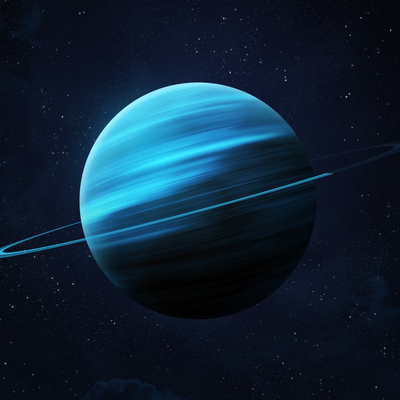

4. Uranus is the only planet named after a greek god.
Another interesting factoid about Uranus is the fact that it is the only planet to be named after a Greek god. It is thought that the Germans astronomer Johann Bode, the man responsible for the naming of Uranus, did not like how the Latin name Caelus (father of Saturn) sounded. Preferring Uranus (also the father of Saturn, according to Greek mythology) sounded, it was settled.
Did you know?
All other planets are named after Roman gods.
5. Only one spacecraft has flew by Uranus.
Voyager 2 is so far the only spacecraft to have flown by Uranus, this occurred in 1986 and it flew by the planet at a distance of 81,500km. This Voyager mission sent back to Earth the first close-up photographs of the ice giant, its rings and moons.
Did you know?
Voyager 2 was launched on 20 August 1977. The space probe was originally designed to last five years. However, Voyager 2 is still exploring space and transmitting signals back to Earth.
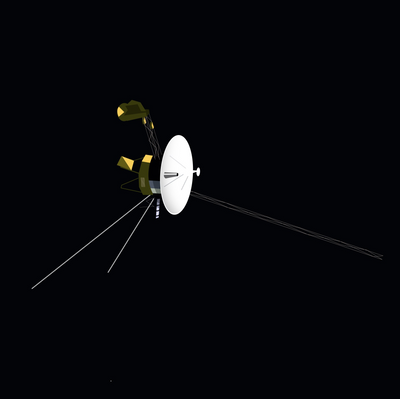
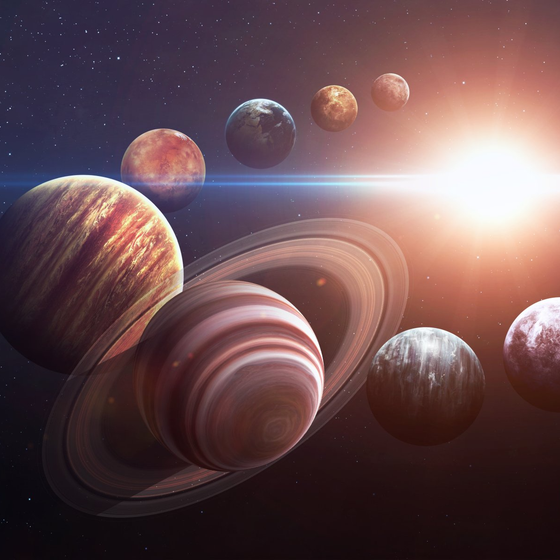
6.It takes Uranus 84 days to orbit the sun.
Uranus has an average orbital speed of 6.8km/s or 4.225 mi/s. However, it spins on its axis every 17 hours, 14 minutes and 24 seconds. This means there would be 42,718 Uranian solar days.
Did you know?
A year on Uranus would take approximately 84 years on earth.
7. Uranus is the furthest planet visible to the naked eye
Did you know that you can see Uranus with just the naked eye? The brightness of Uranus (that is, the amount of light reflected from the Sun) is just within the limits that the human eye can see on its own.
Unfortunately, you would need to be in a spot that has no light pollution and the sky would have to be clear (no clouds), and you would need to know exactly where to look. People a log time before William Herschel would have seen the planet, but they wouldn't have known what it was they were looking at.
Did you know?
The earliest known possible observation of Uranus was in 128BC when Hipparchos may have recorded it as part of his star catalogue.
In 1960 John Flamsteed it at least 6 times, cataloguing it as 34 Tauri.
Between 1750 and 1769 Pierre Charles Le Monnier observed it at least 12 times.

8. Uranus is nicknamed the "ice giant"
Often called the 'ice giant', Uranus has an icy mantle that surrounds its iron and rock core. The planet's upper atmosphere is comprised of ammonia, water and methane ice crystals – these give the planet its pale blue colour.
Did you know?
The planet Uranus, together with Neptune, Jupiter and Saturn, used to be known as a gas giant. However, because we now know what it is comprised of, this classification was changed in the 1990's to 'Ice Giant' – a much more accurate description of the planet.
9. Uranus gets roughly 42 years of daylight followed by 42 years of nighttime.
The planet's axis is at 98 degrees. This means that it is mostly tilted sideways as it goes around the Sun and that its north and south poles are closer to where the equator lies on Earth. During some parts of its orbit, one of the two poles directly faces the Sun – meaning that the planet gets roughly 42 years of daylight, followed by 42 years of nighttime.
Did you know?
Earth's axis is tilted at 23.4 degrees. This is why days are longer in the summer and shorter in the winter as we orbit the sun. In April 2021 scientists have discovered climate change has resulted in the axis shifting approximately 13 feet.


10. Uranus is a long way from the sun
Uranus is the furthest known planet from the sun. Historically Pluto was the furthest planet from the sun, however this was reclassified in 2006.
Did you know?
Uranus orbits the Sun at an average distance of around 2.9 billion kilometres. For comparison, the Earth orbits at a distance of approximately 150 million kilometres from the Sun. The difference between the two is quite staggering – Uranus is approximately 19 times further from the Sun than the Earth is.
© Copyright 2021 Space-facts.co.uk
View our other facts sites: www.animal-facts.co.uk
